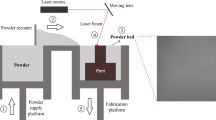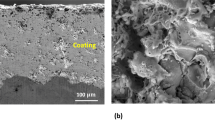Abstract
Currently, there is a very marked trend toward digitization and robotic control of manufacturing processes; thus the target is to optimize the economic resources. Therefore, the monitoring resources usage such as tools monitoring in the machining process become vital into enterprise optimization strategy. The above, since important savings in manufacturing processes can occur. The 304 stainless steels are widely used in the industry due to its mechanical and corrosion protection features. However, its metallurgical characteristics are difficult to machine. In that sense, this work is focused to analyze surface finishing during milling by varying different operational parameters. Then, a Deep Learning algorithm was applied in order to predict the work hardening through its surface finishing by means of the differences in sound recorded during machining. The results suggests that most of the energy is concentrated below 12 kHz. In addition, test specimens machined without coolant fluid yielded shallow surface strains in comparison to the machined ones with coolant fluid. Finally, the mean absolute percentage error for roughness prediction was about 28% suggesting a good correlation. Thus, the proposed methodology can be incorporated to an appropriate alarm and roughness measurements can be employed to detect the increase in work hardening. In both cases to prevent the tool failure.
Graphical abstract




Similar content being viewed by others
Data availability
The data of this article are available upon reasonable request.
References
M. Åkerman, Implementing shop floor IT for Industry 4.0 (Chalmers Tekniska Hogskola, Sweden, 2018)
K. Schwab, The fourth industrial revolution (2016). https://www.weforum.org/agenda/2016/01/the-fourth-industrial-revolution-what-it-means-and-how-to-respond/. Accesed 16 July 2022
J.C.P. Castillo, Programa de trabajo 2019-2024 cidesi (2019). https://www.cidesi.com/site/wp-content/uploads/2020/03/programa-2019-2024-dr-jose-c-pineda-castillo.pdf. Accesed 16 July 2022
Y. Koren, The global manufacturing revolution: product-process-business integration and reconfigurable systems (Wiley, Hoboken, 2010)
N. Haraguchi, C.F.C. Cheng, E. Smeets, The importance of manufacturing in economic development: has this changed? World Development 93, 293–315 (2017)
M. Kaladhar, K.V. Subbaiah, C. Rao, Machining of austenitic stainless steels-a review. Int. J. Mach. Mach. Mater 12(1/2), 178–192 (2012)
B. Kilundu, P. Dehombreux, X. Chiementin, Tool wear monitoring by machine learning techniques and singular spectrum analysis. Mech. Syst. Signal Process. 25(1), 400–415 (2011)
A. Kothuru, S.P. Nooka, R. Liu, Application of audible sound signals for tool wear monitoring using machine learning techniques in end milling. Int. J. Adv. Manuf. Technol. 95(9), 3797–3808 (2018)
Z. Li, R. Liu, D. Wu, Data-driven smart manufacturing: tool wear monitoring with audio signals and machine learning. J. Manuf. Processes 48, 66–76 (2019)
B. Durakovic, Design of experiments application, concepts, examples: state of the art. Period. Eng. Nat. Sci. (PEN) 5(3), 421–439 (2017)
ASTM E3, Standard Guide for Preparation of Metallographic Specimens (American Society for Testing and Materials, 2017)
Author information
Authors and Affiliations
Corresponding author
Ethics declarations
Conflict of interest
The authors declare no conflict of interest.
Additional information
Publisher's Note
Springer Nature remains neutral with regard to jurisdictional claims in published maps and institutional affiliations.
Rights and permissions
Springer Nature or its licensor (e.g. a society or other partner) holds exclusive rights to this article under a publishing agreement with the author(s) or other rightsholder(s); author self-archiving of the accepted manuscript version of this article is solely governed by the terms of such publishing agreement and applicable law.
About this article
Cite this article
Cruz-Gónzalez, C.E., Catalán-Catalán, C.A., Torres-Arellano, M. et al. Cutting tool wear and work hardening monitoring through cutting sound classification and machine learning in 304 stainless steel. MRS Advances 8, 52–58 (2023). https://doi.org/10.1557/s43580-023-00506-4
Received:
Accepted:
Published:
Issue Date:
DOI: https://doi.org/10.1557/s43580-023-00506-4




